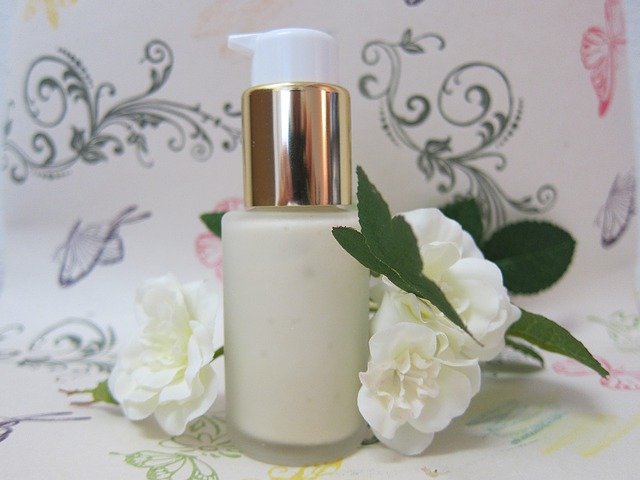
Does it really make a difference when we use safer cosmetics-those that have fewer potentially toxic chemicals?
You may have wondered about that. Maybe you’ve been reading labels and looking for companies that are more careful about what they put into their makeup, lotions, creams, and other personal care products.
All this takes effort, though, and you may have questioned whether it was really making a difference in your health and well being.
A recent study shows-taking the time to choose safer products is definitely worth it!
Researchers Wanted to Know: Do Safer Products Help?
The study was led by researchers at U.C. Berkeley, Clinica de Salud del Valle de Salinas, and a team of young researchers from the CHAMACOS Youth Community Council. They knew that the average woman uses about 12 personal care products a day (men use about 6), and that many of these products contain potentially toxic ingredients like hormone-altering phthalates, sensitizing fragrances, and even carcinogenic formaldehyde-releasing preservatives.
This study was called the “Health and Environmental Research in Make-up of Salinas Adolescents,” or the “HERMOSA” study. In Spanish, hermosa means “beautiful.”
Researchers wanted to find out if using safer cosmetic products could reduce exposure to certain potentially dangerous chemicals. They gave teen study participants personal care products that were free of chemicals like phthalates, parabens, triclosan, and oxybenzone. These are chemicals we often find in cosmetic products, including fragrances, hair products, sunscreens, and soaps. They’ve also all been found to interfere with the body’s hormone system.
The researchers chose teens for this study because they are more vulnerable to chemical exposures. The adolescent years are a period of rapid reproductive development, when hormone disruption may be more damaging. Teens also tend to use more personal care products per day than the average adult women. The results of the study, however, have implications for anyone that regularly uses personal care products.
Avoiding Dangerous Products Makes a Difference
Before the study started, and again after the participants had used the safer products for three days, researchers tested urine samples. Results showed the following:
- Levels of diethyl phthalate, commonly found in fragrances, dropped by 27 percent.
- Levels of methyl and propyl parabens-used as preservatives in cosmetics-dropped by 44 and 45 percent respectively.
- Triclosan, found in antibacterial soaps and some toothpastes, fell 36 percent.
- Benzophenone-3 (BP-3), found in sunscreens as “oxybenzone,” also fell 36 percent.
That was after only three days. Can you imagine how much we could lower our exposure to these dangerous chemicals if we used safer products all the time?
At the end of the study, the young participants were so impressed that they went out to educate their friends and community members, and even went so far as to present their case to legislatures in Sacramento, California.
“One of the goals of our study was to create awareness among the participants of the chemicals found in everyday products,” said teen researcher Maritza Cardenas, “to help make people more conscious about what they’re using. Seeing the drop in chemical levels after just three days shows that simple actions can be taken, such as choosing products with fewer chemicals, and make a difference.”
Tips to Make Safer Choices in Cosmetics
I wish that we could all go through this kind of study. There’s nothing like seeing the results in front of your eyes to help you realize the effects, right?
I’m hoping, though, that by sharing the results, I’ll help CV Skinlabs readers to realize that in finding and using safer products, we are definitely making a difference in our health and well being.
Remember that personal care and cosmetics products are poorly regulated in our country. That means it’s up to us to choose carefully. To take some of the work out of the process, try these tips:
- Choose your brands carefully. Realize that many department store brands that have been around forever are used to “business as usual,” which means using lots of untested and potentially harmful chemicals. Look for brands that are a bit newer on the market (within the last 10-15 years) that are committed to using safe ingredients.
- Read labels. Look for potentially dangerous ingredients like those listed in our Ingredients to Avoid.
- Shop at the right places. Change is underway in the market. Many regular department stores are now carrying a small selection of safer products. But don’t rely exclusively on them. We have a handy list of safer shopping locations for you here and here.
- CV Skinlabs is a good choice! Our products are 100% free of phthalates, parabens, and other potentially dangerous ingredients. Read our commitment to ingredient safety here.
What do you think of this study?
SourcesSarah Yang, “Teen girls see big drop in chemical exposure with switch in cosmetics,” UC Berkeley, [Press Release], March 7, 2016, http://news.berkeley.edu/2016/03/07/cosmetics-chemicals/.Kim G. Harley, et al., “Reducing Phthalate, Paraben, and Phenol Exposure from Personal Care Products in Adolescent Girls: Findings from the HERMOSA Intervention Study,” Environmental Health Perspectives, http://ehp.niehs.nih.gov/wp-content/uploads/advpub/2016/3/ehp.1510514.acco.pdf.

